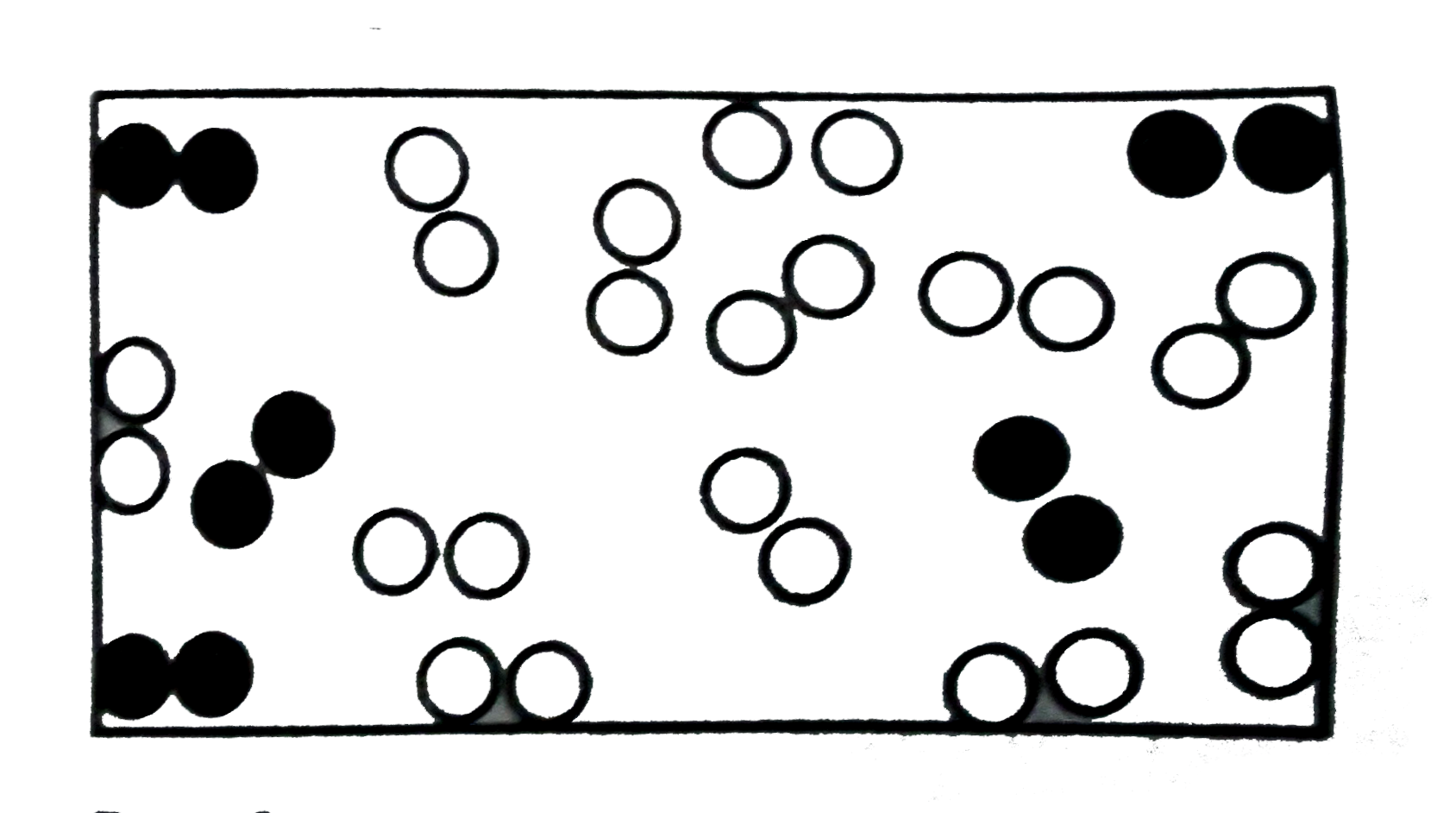
In the above diagram, the paired open spheres represent molecules and the paired solid spheres represent molecules. When the molecules in the box react to form the maximum possible amount of ammonia molecules, what is the limiting reactant and how many molecules of can be formed?
is limiting. 5 molecules of can be formed.
is limiting. 10 molecules of can be formed.
is limiting. 8 molecules of can be formed.
is limiting, 12 molecules of can be formed.
The correct Answer is:C
Step by step video, text & image solution for In the above diagram, the paired open spheres represent H_(2) molecules and the paired solid spheres represent N_(2) molecules. When the molecules in the box react to form the maximum possible amount of ammonia (NH_(3) molecules, what is the limiting reactant and how many molecules of NH_(3) can be formed? by Chemistry experts to help you in doubts & scoring excellent marks in Class 11 exams.
Updated on:21/07/2023Topper's Solved these Questions
- MOLE CONCEPT, STOICHIOMETRY & CONCENTRATION TERMSBOOK - GRB PUBLICATIONCHAPTER - MOLE CONCEPT, STOICHIOMETRY & CONCENTRATION TERMSEXERCISE - Percentage yield and percentage purity
18 Videos
- MOLE CONCEPT, STOICHIOMETRY & CONCENTRATION TERMSBOOK - GRB PUBLICATIONCHAPTER - MOLE CONCEPT, STOICHIOMETRY & CONCENTRATION TERMSEXERCISE - Sequential and Parallel Reactions
17 Videos
- MOLE CONCEPT, STOICHIOMETRY & CONCENTRATION TERMSBOOK - GRB PUBLICATIONCHAPTER - MOLE CONCEPT, STOICHIOMETRY & CONCENTRATION TERMSEXERCISE - Density
36 Videos
- ISOMERISMBOOK - GRB PUBLICATIONCHAPTER - ISOMERISMEXERCISE - SUBJECTIVE TYPE
67 Videos
- NOMENCLATURE AND CLASSIFICATIONBOOK - GRB PUBLICATIONCHAPTER - NOMENCLATURE AND CLASSIFICATIONEXERCISE - Subjective Type
24 Videos
Similar Questions
Knowledge Check
The maximum possible number of hydrogen bonds in which an H2O molecule can participate is
A1B2C3D4Maximum number of molecules of CH3I that can react with a molecule of CH3NH2 are
A3B4C2D1The possible form of H2 molecule on the basis fo three isotopes can be :
A3B6C8D19
How many H-bonds are formed by each H2O molecule and how many water moleculas are attached
to each water molecule and in what diraction ?
View SolutionA molecule has 3 bonded pairs and 2 lone pairs on the central atom. Explain the shape of the molecule with an example.
View SolutionReduction of one molecule of nitrogen into 2 molecules of NH3 consumes
View SolutionHow many lone pair of electrons are present on chlorine in ClF3 molecule ?
View SolutionA molecule having 3 bond pairs and 2 lone pairs will have ?
View Solution
